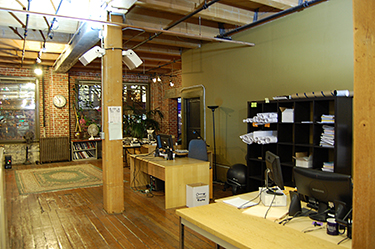|
Subscribe / Renew |
|
|
Contact Us |
|
| ► Subscribe to our Free Weekly Newsletter | |
| home | Welcome, sign in or click here to subscribe. | login |
Real Estate
| |
 |
December 12, 2013
State of the Market: Fledgling tech likes ‘gritty’ office buildings
Colliers|Seattle

Dahl
|
Why isn’t my office building full? This question tortures some building owners who read about the chunks of space Amazon took last year.
The answer depends on a number of factors. Some submarkets are hot and others cool. Some product types sit, while others fly off the shelf. The reason behind the difference is that office space helps some tenants hire and retain talent. To others, it is a commodity.
Demand over the last few years has been driven by Amazon and technology firms. Their appetite for space has shaped the office market.
Fledgling technology firms often gravitate towards Pioneer Square. They are attracted to the grittiness: exposed brick with a faded painted ad for 5 cent cigars and Douglas fir beams, slightly charred by an old fire.

The space seems authentic. It helps to accomplish the firm’s number one goal, which is to hire and retain software development talent.
How? Talented employees currently have choices. The employee wants to work in a space that is soulful; not dad’s bank space. She also wants a building bike room, lockers, showers and meeting areas. Tenants want a cool neighborhood coffee shop like Zeitgeist and lunch spots like Salumi or Brave Horse nearby. Companies choosing gritty space also don’t seem like they are spending too much of their venture capital on office space.
Pioneer Square seems to have overcome the perception it is too gritty, which stems from the visibility of folks served by the numerous social services organizations in the area. As a result, Pioneer Square has a low vacancy rate and increasing rental rates. Landlord’s contributions to tenant improvements are low.
As technology firms mature and graduate to larger space, they typically want to be on one floor on a larger floor plate. On the Eastside, abundant parking is a huge driver. In Seattle, riding the bus, bike, skateboard or walking has cache. For this package of lifestyle options, tenants often look to South Lake Union or Union Station. Fremont is popular for many of the same reasons. It has the added benefit of being in walking and biking proximity to housing.
The buildings in these submarkets feel familiar to the technology firm. You would expect to find them in Redmond. They are typically four to six stories high. But, what makes them appealing is that they are in a campus setting in close proximity to urban grit. The campus setting feels good for employees who may be just a few years out of college.
South Lake Union is doubly attractive for technology companies looking to steal overworked, yet qualified employees from Amazon. If you are in the life science industry, South Lake Union is where all of the brains are, and the brains like to cohabitate.
The central business district and retail core are also strong. Corporate America will always love a Class A trophy tower. As a result Two Union Square, U.S. Bank Centre and the Russell Investments Center are well leased and fetch some of the highest rental rates. But, on the other hand, dated space with dropped ceilings and a sea of cubicles which evoke images of grandpa’s old insurance space and the movie “Office Space” sit vacant. The area near the Municipal Tower feels governmental, which is not attractive to employers trying to hire talent.
Traditional tenants — banking, insurance and law — are active, as well. But, as they renew, they are becoming more efficient and using less space. The amount of space per employee has decreased, and open work areas and fewer private offices have become the norm.
Many of the owners of older Class A towers have spent capital trying to make their space more current with some success. They have removed dropped ceilings to expose the structure and create a more contemporary look. This works in some buildings, but looks contrived in others. It seems like technology tenants are largely only going vertical as a result of a lack of space in more desirable submarkets.
Belltown and lower Queen Anne offer good value. Martin Selig dominates this market with a well-leased portfolio of buildings that offer lower economics, but few bells and whistles. Belltown will inevitably become more expensive as the Amazon wave washes past Seventh Avenue.
The market south of Seneca to Pioneer Square is the area to watch. As the viaduct comes down and the tunnel becomes a reality, a new promenade will be built connecting this submarket to the waterfront. At the same time, residential and retail are coming, which will make this a truly 24-hour city.
Dan Dahl is senior vice president at Colliers|Seattle specializing in downtown Seattle office leasing and investment sales.
Other Stories:
- Empty strip mall? Here’s how to fill it
- Survey: Urban Visions
- Survey: Thomas Co.
- Survey: Barrientos LLC
- Survey: Wright Runstad and Co.
- Survey: Flinn Ferguson
- Survey: Lake Union Partners
- Survey: Schnitzer West
- State of the Market: Is a banner year on tap for industrial properties?
- State of the Market: Retailers cash in on strong local market
- State of the Market: Multifamily rides Seattle’s strong job market
- Easements: Not just for highways and driveways
- 40-year-old plan could amp up downtown livability
- Commercial property owners deal with rising flood insurance
- Survey: Wallace Properties



